利用者:Ekotoba/sandbox
| ネズミ目(齧歯目) Rodentia | ||||||||||||||||||||||||
|---|---|---|---|---|---|---|---|---|---|---|---|---|---|---|---|---|---|---|---|---|---|---|---|---|
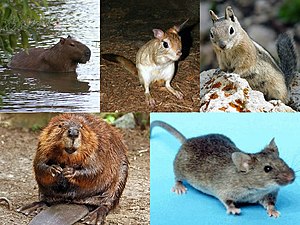 | ||||||||||||||||||||||||
| 分類 | ||||||||||||||||||||||||
| ||||||||||||||||||||||||
| 学名 | ||||||||||||||||||||||||
| Rodentia Bowdich, 1821 | ||||||||||||||||||||||||
| 亜目 | ||||||||||||||||||||||||
 ネズミ目の生息地(移入された個体群は含まない) |
ネズミ目 (ネズミもく、Rodentia) は脊椎動物亜門 哺乳綱の目の1つ。齧歯目(げっしもく)、齧歯類(げっしるい)ともいう。リス、ネズミ、ヤマアラシなどが含まれる。現在の哺乳類で最も繁栄しているグループであり、現生哺乳類5,416種の41パーセントにあたる2,277種を占める[1]。生息域は、南極大陸を除く全大陸、およびほとんどすべての島。樹上生活をするもの、地中に穴を掘って暮らすもの、半水棲生活をするものなど、さまざまな環境に適応した多様な種が存在する。
特徴
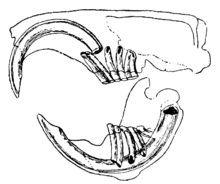
ネズミ目は、概して小さいものが多く、体重は100グラムまたはそれ以下である[2]。なかでもアフリカンドワーフマウスは体長6センチメートル、体重7グラム程度しかない。一方、大きいものでは、現生種最大のカピバラ Hydrochoeris hydrochaeris は66キログラムになる[2]。化石種としては、1999年に南米ベネズエラで全身化石が発見された第三紀後期のフォベロミス・パッテルソニ Phoberomys pattersoni が最大で、体高 1.3 m(尾まで含めた体長は3 m)、体重 700 kg程度あったと考えられている[3]。
ネズミ目の動物は、上顎、下顎の両方に伸び続ける2つの門歯をもつ。この門歯は物をかじることで次第に削れてゆき、長さを保っている。漢語名齧歯目、および学名「Rodentia」はラテン語で「かじる(齧る)」という意味の rodere からきている。歯は、食べ物をかじったり、巣穴を掘ったり、身を守ったりするために使われる。ネズミ目の動物の多くは、種子などの植物質を食料とするが、昆虫を食べることもあり、オオミズネズミのように魚を主食とする種も含まれる[2]。なお他のほ乳類とは異なり、ネズミ目では嘔吐反射がみられない[4]。
They tend to be social animals and many species live in societies with complex ways of communicating with each other. Mating among rodents can vary from 一夫一婦制, to 一夫多妻制, to promiscuity. Many have litters of underdeveloped, altricial young, while others have precocial young that are relatively well developed at birth.
The rodent fossil record dates back to the Paleocene on the supercontinent of Laurasia. They greatly diversified in the Eocene, as they spread across continents, sometimes even finding means to cross oceans. Rodents reached both South America and Madagascar from Africa, and were the only terrestrial placental mammals to reach and colonize Australia.
Rodents have been used as food, for clothing, as pets and as laboratory animals in research. Some species, in particular the brown rat, the black rat, and the house mouse are serious pests, eating and spoiling food stored by humans, and spreading diseases. Accidentally introduced species of rodents are often considered to be invasive, as they sometimes threaten the survival of native species, such as island birds, previously isolated from land-based predators.
系統
| 真主齧上目 Euarchontoglires |
| ||||||||||||||||||||||||||||||||||||||||||||||||
分類
ネズミ目は系統的にはヤマアラシ亜目 Hystricomorpha (Ctenohystrica)、ネズミ亜目 Myomorpha、リス亜目 Sciuromorpha (Sciurognathi) の3亜目に分かれる[5]。ただし、古い分類では、同じ3目に分けていても内容が微妙に異なることがある。
ネズミ亜目の3下目をそれぞれ亜目に引き上げ5亜目とする分類もある[6]が、本質的には同じである。
顎骨の形態からリス顎亜目(リス亜目) Sciurognathi とヤマアラシ顎亜目(ヤマアラシ亜目) Hystricognathi に分ける分類もあるが、リス顎亜目はネズミ亜目・リス亜目・ヤマアラシ亜目の一部(グンディ科)にわたって分布する側系統と思われる。
ヤマアラシ亜目


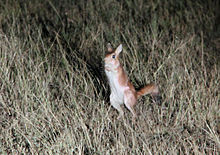

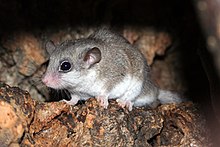

ヤマアラシ下目の2つの小目をそれぞれ下目とすることもある。
- ヤマアラシ下目 Hystricognathi - 古い分類のヤマアラシ顎亜目に当たる。
- テンジクネズミ小目 Caviomorpha
- デグー上科 Octodontoidea
- ヌートリア科 Myocastoridae - ヌートリア。フチア科に含めることも。
- フチア科(カプロミス科) Capromyidae - フチア
- デグー科 Octodontidae - デグー、コルロネズミなど
- ツコツコ科 Ctenomyidae - ツコツコ
- アメリカトゲネズミ科(アメリカトビネズミ科) Echimyidae - アメリカトゲネズミ
- チンチラネズミ科 Abrocomidae - チンチラネズミ。分子系統ではチンチラ上科から移される。
- チンチラ上科 Chinchilloidea
- チンチラ科 Chinchillidae - チンチラ、ビスカーチャ
- パカラナ科 Dinomyidae - パカラナ。分子系統ではテンジクネズミ上科から移される。
- アメリカヤマアラシ上科 Erethizontoidea
- アメリカヤマアラシ科(キノボリヤマアラシ科) Erethizontidae - カナダヤマアラシ、キノボリヤマアラシなど
- テンジクネズミ上科 Cavioidea
- パカ科 Cuniculidae (Agoutidae) - パカ
- テンジクネズミ科 Caviidae - モルモット、マーラ、クイ、モコ
- カピバラ科 Hydrochoeridae - カピバラ。テンジクネズミ科に含めることも。
- アグーチ科 Dasyproctidae - アグーチ
- チンチラネズミ科 Abrocomidae - チンチラネズミ
- デグー上科 Octodontoidea
- フィオミス小目 Phiomorpha - 側系統の可能性がある
- ヨシネズミ科 Thryonomyidae
- アフリカイワネズミ科 Petromyidae
- デバネズミ科 Bathyergidae - ハダカデバネズミなど
- ヤマアラシ科 Hystricidae - フィオミス小目から外すことも。
- テンジクネズミ小目 Caviomorpha
- グンディ下目 Ctenodactylomorphi (グンディ上科 Ctenodactyloidea)
- グンディ科(ツコツコ科) Ctenodactylidae - グンディ。従来はリス亜目とされることが多かった。
- ディアトミス科 Diatomyidae - ラオスイワネズミ。2005年に初めて現生種が発見された。
ネズミ亜目
3つの下目をそれぞれ亜目とすることもある。
- ビーバー下目 Castoriomorpha
- ホリネズミ上科 Geomyoidea
- ビーバー上科 Castoroidea
- ビーバー科 Castoridae - ビーバーなど
- ウロコオリス下目 Anomaluromorpha
- ネズミ下目 Myodonta - 亜目に格上げするときは Myomorpha となる。
リス亜目
ネズミ目でないもの
形態などから、ネズミの名を持たされた別目の種がいくつかある。
脚注
参考文献
- Marcelo R. Sánchez-Villagra, Orangel Aguilera, Inés Horovitz (9 2003). “The Anatomy of the World's Largest Extinct Rodent”. Science 301 (5640): 1708-1710. doi:10.1126/science.1089332.
- Shani Blanga-Kanfi, Hector Miranda, Osnat Penn, Tal Pupko, Ronald W DeBry, and Dorothée Huchon (2009), “Rodent phylogeny revised: analysis of six nuclear genes from all major rodent clades”, BMC Evolutionary Biology 9: 71 2014年5月3日閲覧。
Characteristics

The distinguishing feature of the rodents is their single pair of continuously growing, razor-sharp incisors.[1] These incisors have thick layers of enamel on the front and little enamel on the back.[2] Because they do not stop growing, the animal must continue to wear them down so that they do not reach or even pierce the skull. As the incisors grind against each other, the softer dentine on the rear of the teeth wears away, leaving the sharp enamel edge shaped like the blade of a chisel.[3] Most species have up to 22 teeth with no canines or anterior premolars. There is a gap, or diastema, between the incisors and the cheek teeth in most species. This allows them to suck in their cheeks or lips to shield their mouth and throat from wood shavings and other inedible material, discarding this waste from the sides of their mouth.[4] Chinchillas and guinea pigs have a high fiber diet; their molars have no roots and grow continuously like their incisors.[5]
In many species, the molars are relatively large, intricately structured and highly cusped or ridged, though some, such as Pseudohydromys, have smaller and simpler ones. Rodent molars are well equipped to grind food into small particles.[1] The jaw musculature is strong. The lower jaw is thrust forward while gnawing and is pulled backwards during chewing.[2] Rodent groups differ in the arrangement of the jaw muscles and associated skull structures, both from other mammals and amongst themselves. The Sciuromorpha, such as the eastern grey squirrel, have a large deep masseter, making them efficient at biting with the incisors. The Myomorpha, such as the brown rat, have an enlarged temporalis muscle, making them able to chew powerfully with the molars. The Hystricomorpha, such as the guinea pig, have a larger superficial masseter muscle and a smaller deep masseter muscle than rats or squirrels, possibly making them less efficient at biting with the incisors, but their enlarged internal pterygoid muscle may allow them to move the jaw further sideways when chewing.[6]
最大種のカピバラは、最大66キログラムにもなるが、ほとんどのネズミ目は100グラム以下である。最小種は、バルチスタンコミミトビネズミ Salpingotulus michaelisで、頭胴長は平均4.4センチメートル、体重3.75グラム。Rodents have wide-ranging 形態学, but typically have squat bodies and short limbs.[1] The forelimbs usually have five digits, including an opposable thumb, while the hindlimbs have three to five digits. The elbow gives the forearms great flexibility.[3][7] The majority of species are plantigrade, walking on both the palms and soles of their feet, and have claw-like nails. The nails of burrowing species tend to be long and strong, while arboreal rodents have shorter, sharper nails.[7] Rodent species use a wide variety of methods of locomotion including quadrupedal walking, running, burrowing and climbing, bipedal hopping (kangaroo rats and hopping mice), swimming and even gliding. Scaly-tailed squirrels and flying squirrels, although not closely related, can both glide from tree to tree using parachute-like membranes that stretch from the forelimbs to the hindlimbs.[8] The agouti is fleet-footed and antelope-like, being digitigrade and having hoof-like nails. The majority of rodents have tails, which can be of many shapes and sizes. Some tails are prehensile, as in the Eurasian harvest mouse, and the fur on the tails can vary from bushy to completely bald. The tail is sometimes used for communication, as when beavers slap their tails on the water surface or house mice rattle their tails to indicate alarm. Some species have vestigial tails or no tails at all.[1] In some species, the tail is capable of regeneration if a part is broken off.[3]

Rodents generally have well-developed senses of smell, hearing and vision. Nocturnal species often have enlarged eyes and some are sensitive to ultraviolet light. Many species have long, sensitive whiskers or vibrissae for touch or "whisking". Some rodents have cheek pouches, which may be lined with fur. These can be turned inside out for cleaning. In many species, the tongue cannot reach past the incisors. Rodents have efficient digestive systems, absorbing nearly 80 percent of ingested energy. When eating cellulose, the food is softened in the stomach and passed to the cecum, where bacteria reduce it to its carbohydrate elements. The rodent then practices coprophagy, eating its own fecal pellets, so that the nutrients can be absorbed by the gut. Rodents therefore often produce a hard and dry fecal pellet.[1] In many species, the penis contains a bone, the baculum; the testes can be located either abdominally or at the groin.[3]
性的二形は多くのネズミ目で見られる。いくつかの種では、オスがメスより体が大きいが、その逆もある。Male-bias 性的二形は is typical for ジリス、kangaroo rats, solitary mole rats and pocket gophers; it likely developed due to sexual selection and greater male-male combat. Female-bias sexual dimorphism exists among chipmunks and jumping mice. It is not understood why this pattern occurs, but in the case of yellow-pine chipmunks it may be that males selected larger females due to their greater reproductive success. In some species, like voles, sexual dimorphism can vary from population to population. In bank voles, females are typically larger than males, however male-bias sexual dimorphism occurs in alpine populations, possibly because of the lack of predators and greater competition between males.[9]
The diversity of characteristics of rodents is great, sometimes even in closely related species. Characteristics of several rodents are given in the table below.[10]
| Species | 最長寿命 († :飼育下) | 大人の体重 グラム | 妊娠期間 日間 | Litters per year | 産子数 平均 (range) |
|---|---|---|---|---|---|
| House mouse (Mus musculus)[11] | 4.0† | 20 | 19 | 5.4 | 5.5 (3 to 12) |
| Naked mole rat (Heterocephalus glaber)[12] | 31.0 | 35 | 70 | 3.5 | 11.3 |
| Black rat (Rattus rattus)[13] | 4.0† | 200 | 21 | 4.3 | 7.3 (6 to 12) |
| Brown rat (Rattus norvegicus)[14] | 3.8† | 300 | 21 | 3.7 | 9.9 (2 to 14) |
| Eurasian red squirrel (Sciurus vulgaris)[15] | 14.8† | 600 | 38 | 2.0 | 5.0 (1 to 10) |
| Long-tailed chinchilla (Chinchilla lanigera)[16] | 17.2† | 642 | 111 | 2.0 | 2.0 (1 to 6) |
| Guinea pig (Cavia porcellus)[17] | 12.0 | 728 | 68 | 5.0 | 3.8 (1 to 8) |
| Coypu (Myocastor coypus)[18] | 8.5† | 7,850 | 131 | 2.4 | 5.8 (3 to 12) |
| Capybara (Hydrochoerus hydrochaeris)[19] | 15.1† | 55,000 | 150 | 1.3 | 4.0 (2 to 8) |
分布と生息地
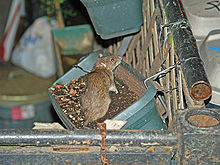
最も広範囲に生息する哺乳類のグループのひとつであるネズミ目は、南極大陸を除くすべての大陸にみられる。彼らは、人的介入なしにオーストラリア大陸とニューギニア島に群生地を作った、唯一の陸生の有胎盤類である。人間はまた、ネズミ目が多くの外洋の離島に生息地を拡大することを可能にしてきた(例:ナンヨウネズミ)[3]。ネズミ目は、冷たいツンドラ(彼らは雪の下で生きることができる)から暑い砂漠まで、ほとんどあらゆる陸上の生息地に適応している。樹上性リスとアメリカヤマアラシ科のようないくつかの種は、樹上生活に適応しており、一方で、ホリネズミ類、ツコツコ類、メクラネズミやデバネズミ類のような、地中に複雑な巣穴システムを作って、ほとんど完全に地下で生活している仲間もいる。それ以外のものは地表に暮らすが、たいてい隠れることのできる巣穴を持つ。ビーバーとマスクラットは部分的に水生であることが知られているが[1]、水生生活に最もよく適応したネズミ目は、おそらくニューギニア島のミミナシミズネズミ Crossomys moncktoniである[20]。ネズミ目は、農地や都市部のような人工的な環境でもよく育つ[21]。
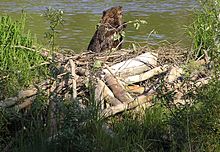
Though some species are common pests for humans, rodents also play important ecological roles.[1] Some rodents are considered keystone species and ecosystem engineers in their respective habitats. 北アメリカ大陸のグレートプレーンズでは、プレーリードッグの穴掘り行動が重要な役割を果たしている in soil aeration and nutrient redistribution, raising the organic content of the soil and increasing the absorption of water. They maintain these grassland habitats,[22] and some large herbivores like bison and pronghorn prefer to graze near prairie dog colonies due to the increased nutritional quality of forage.[23] Prairie dogs can, however, also contribute to regional and local biodiversity loss, increased seed depredation and the establishment and spread of invasive shrubs.[22] Burrowing rodents may eat the fruiting bodies of fungi and spread spores through their feces, thereby allowing the fungi to disperse and form symbiotic relationships with the roots of plants (which usually cannot thrive without them). As such, these rodents may play a role in maintaining healthy forests.[24]
In many temperate regions, beavers play an essential hydrological role. When building their dams and lodges, beavers alter the paths of streams and rivers[25] and allow for the creation of extensive wetland habitats. One study found that engineering by beavers leads to a 33 percent increase in the number of herbaceous plant species in riparian areas.[26] Another study found that beavers increase wild salmon populations.[27]
生態
食性

ほとんどのネズミ目は、草食性で、もっぱら種子、茎、葉、花、根のような植物質を食べる。いくつかの種は、雑食性で、捕食者であるものもいる[2]。キタハタネズミは、典型的な草食性のネズミ目で、イネ科植物、ハーブ、地下茎、苔、その他の植物を食べ、冬の間は木の皮をかじる。時折、幼虫のような無脊椎動物も食べる[28]。トウブホリネズミは、地下でトンネルを掘っている間に見つけた植物質を食べ、頬袋にイネ科植物、根、塊茎を集め、食料を貯蔵するための巣室に貯食する[29]。テキサスホリネズミ avoids emerging onto the surface to feed by seizing the roots of plants with its jaws and pulling them downwards into its burrow. It also practices coprophagy.[30] The モリアフリカオニネズミ forages on the surface, gathering anything that might be edible into its capacious cheek pouches until its face bulges out sideways. It then returns to its burrow to sort through the material it has gathered and eats the nutritious items.[31]
The agouti is one of the few animals that can break open the large capsules of the Brazil nut fruit. There are too many seeds inside to be consumed in one meal, so the agouti carries some off and caches them. This helps dispersal of the seeds as any that the agouti fails to retrieve are distant from the parent tree when they germinate. Other nut-bearing trees tend to bear a glut of fruits in the autumn. These are too numerous to be eaten in one meal and squirrels gather and store the surplus in crevices and hollow trees. In desert regions, seeds are often only available for short periods. The kangaroo rat collects all it can find and stores them in larder chambers in its burrow.[31]
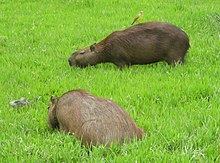
A strategy for dealing with seasonal plenty is to eat as much as possible and store the surplus nutrients as fat. Marmots do this, and may be 50 percent heavier in the autumn than in the spring. They rely on their fat reserves during their long winter hibernation.[31] Beavers feed on the leaves, buds and inner bark of growing trees, as well as aquatic plants. They store food for winter use by felling small trees and leafy branches in the autumn and immersing them in their pond, sticking the end into the mud to anchor them. Here, they can access their food supply underwater even when their pond is frozen over.[32]
Although traditionally rodents have been regarded as herbivores, a number of species opportunistically include insects, fish or meat in their diet and more specialized forms rely on such foods. A functional-morphological study of the rodent tooth system supports the idea that primitive rodents were omnivores rather than herbivores. Studies of the literature show that numerous members of the Sciuromorpha and Myomorpha, and a few members of Hystricomorpha, have either included animal matter in their diet or been prepared to eat such food when offered it in captivity. Examination of the stomach contents of the North American white-footed mouse, normally considered to be herbivorous, showed 34% animal matter.[33]
More specialized carnivores include the shrewlike rats of the Philippines, which feed on insects and soft-bodied invertebrates, and the Australian water rat, which devours aquatic insects, fish, crustaceans, mussels, snails, frogs, birds' eggs and water birds.[33][34] The grasshopper mouse from dry regions of North America feeds on insects, scorpions, other small mice and only a small part of its diet is plant material. It has a chunky body with short legs and tail, but is agile and can easily overpower prey as large as itself.[35]
Social behavior

Rodents exhibit a wide range of types of social behavior ranging from the first known mammalian caste system of the naked mole rat,[36] the extensive "town" of the colonial prairie dog,[37] through family groups to the independent, solitary life of the edible dormouse. Adult dormice may have overlapping feeding ranges, but they live in individual nests and feed separately, coming together briefly in the breeding season to mate. The pocket gopher is also a solitary animal outside the breeding season, each individual digging a complex tunnel system and maintaining a territory.[7]
Larger rodents tend to live in family units where parents and their offspring live together until the youngsters disperse. Beavers live in extended family units typically with a pair of adults, this year's kits, the previous year's offspring and sometimes older young.[38] Brown rats usually live in small colonies with up to six females sharing a burrow and one male defending a territory around the burrow. At high population densities, this system breaks down and males show a hierarchical system of dominance with overlapping ranges. Female offspring remain in the colony while male young disperse.[39] The prairie vole is monogamous and forms a lifelong pair bond. Outside the breeding season, prairie voles live in close proximity with others in small colonies. A male is not aggressive towards other males until he has mated, after which time he defends a territory, a female and a nest against other males. The pair huddle together, groom one another, and share nesting and pup-raising responsibilities.[40]
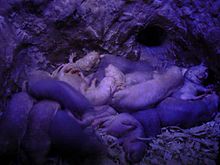
Among the most social of rodents are the ground squirrels, which typically form colonies based on female kinship, males dispersing after weaning and becoming nomadic as adults. Cooperation in ground squirrels varies between species and typically includes making alarm calls, defending territories, sharing food, protecting nesting areas and preventing infanticide.[41] The black-tailed prairie dog forms large towns that may cover many hectares. The burrows do not interconnect but are excavated and occupied by territorial family groups known as coteries. A coterie often consists of an adult male, three or four adult females, several non-breeding yearlings and this year's offspring. Individuals within coteries are friendly with each other, but hostile towards outsiders.[37]
Perhaps the most extreme examples of colonial behavior in rodents are the eusocial naked mole rat and Damaraland mole rat. The naked mole rat lives completely underground and can form colonies of up to eighty individuals. Only one female and up to three males in the colony reproduce, while the rest of the members are smaller, sterile and function as workers. Some individuals are of intermediate size. They help with the rearing of the young and can take the place of a reproductive if one dies.[42] The Damaraland mole rat is characterized by having a single reproductively active male and female in a colony where the remaining animals are not truly sterile, but only become fertile if they establish a colony of their own.[43]
Communication
嗅覚

Rodents use scent marking in many social contexts including inter- and intra-species communication, the marking of trails and the establishment of territories. Their urine provides genetic information about individuals including the species, the sex and individual identity, and metabolic information on dominance, reproductive status and health. Compounds derived from the 主要組織適合遺伝子複合体 (MHC) are bound to several urinary proteins. The odor of a predator depresses scent-marking behavior.[44]
Rodents are able to recognize close relatives by smell and this allows them to show 縁故主義 (preferential behavior toward their kin) and also avoid inbreeding. This 血縁認識 is by 嗅覚 cues from urine, feces and glandular secretions. The main assessment may involve the MHC, where the degree of relatedness of two individuals is correlated to the MHC genes they have in common. In non-kin communication, where more permanent odor markers are required, as at territorial borders, then non-volatile major urinary proteins (MUPs), which function as フェロモン transporters, may also be used. MUPs may also signal individual identity, with each male ハツカネズミ (Mus musculus) excreting urine containing about a dozen genetically encoded MUPs.[45]
ハツカネズミ deposit urine, which contains フェロモン, for territorial marking, individual and group recognition, and social organization. This can occur in a range of ways:[46]
- The ブルース効果: Pheromones from strange adult males cause females to terminate their pregnancies[46]
- The Whitten effect: Pheromones from familiar males cause synchronous estrus in a female population[46]
- The Vandenbergh effect: Pheromones from mature male ハツカネズミ cause an early induction of the first estrous cycle in prepubertal female mice[46]
- The Lee–Boot effect: Pheromones from mature females cause the suppression or prolongation of oestrous cycles of other female house mice (and other rodents) when they are housed in groups and isolated from males[46]
- Pheromones from males or from pregnant or lactating females can speed up or retard sexual maturation in juvenile females[46]
Territorial beavers and red squirrels investigate and become familiar with the scents of their neighbors and respond less aggressively to intrusions by them than to those made by non-territorial "floaters" or strangers. This is known as the "dear enemy effect".[47][48]
聴覚

Many rodent species, particularly those that are diurnal and social, have a wide range of alarm calls that are emitted when they perceive threats. There are both direct and indirect benefits of doing this. A potential predator may stop when it knows it has been detected, or an alarm call can allow conspecifics or related individuals to take evasive action.[49] Several species, for example prairie dogs, have complex anti-predator alarm call systems. These species may have different calls for different predators (e.g. aerial predators or ground-based predators) and each call contains information about the nature of the precise threat.[50] The urgency of the threat is also conveyed by the acoustic properties of the call.[51]
Social rodents have a wider range of vocalizations than do solitary species. Fifteen different call-types have been recognized in adult Kataba mole rats and four in juveniles.[52] Similarly, the degu, another social, burrowing rodent, exhibits a wide array of communication methods and has an elaborate vocal repertoire comprising fifteen different categories of sound.[53] Ultrasonic calls play a part in social communication between dormice and are used when the individuals are out of sight of each other.[54]
House mice use both audible and ultrasonic calls in a variety of contexts. Audible vocalizations can often be heard during agonistic or aggressive encounters, whereas ultrasound is used in sexual communication and also by pups when they have fallen out of the nest.[46]
ドブネズミ (Rattus norvegicus) は、取っ組み合い遊びのような楽しい体験のあいだ、短く、高い周波数の超音波の鳴き声を発し, when anticipating routine doses of morphine, during mating, and when tickled. The vocalization, described as a distinct "chirping", has been likened to laughter, and is interpreted as an expectation of something rewarding. In clinical studies, the chirping is associated with positive emotional feelings, and social bonding occurs with the tickler, resulting in the rats becoming conditioned to seek the tickling. However, as the rats age, the tendency to chirp declines. Like most rat vocalizations, the chirping is at frequencies too high for humans to hear without special equipment, so bat detectors have been used for this purpose.[55]
ドブネズミは、エコーロケーションに超音波を使用することが報告されている[46]。ネズミ目に聞こえる周波数は、種によって異なる。次の表は、いくつかの種の可聴域を示したものである[56]
| 種 | Lower limit (Hz) | Higher limit (Hz) | Specific calls |
|---|---|---|---|
| ヒト | 64 | 23,000 | |
| ラット | 200 | 76,000 | High frequency ultrasonic "pleasure" call emitted at 50 kHz |
| マウス | 1,000 | 91,000 | Distress call of young emitted at 40 kHz |
| Gerbil | 100 | 60,000 | |
| Guinea pig | 54 | 50,000 | |
| チンチラ | 90 | 22,800 |
視覚
ネズミ目は、霊長類を除くすべての胎生の哺乳類と同じく、網膜に錐体細胞を2タイプしか持たない[57] a short wavelength "blue-UV" type and a middle wavelength "green" type. They are therefore classified as dichromats; however, they are visually sensitive into the ultraviolet (UV) spectrum and therefore can see light that humans can not. The functions of this UV sensitivity are not always clear. In degus, for example, the belly reflects more UV light than the back. Therefore, when a degu stands up on its hind legs, which it does when alarmed, it exposes its belly to other degus and ultraviolet vision may serve a purpose in communicating the alarm. When it stands on all fours, its low UV-reflectance back could help make the degu less visible to predators.[58] Ultraviolet light is abundant during the day but not at night. There is a large increase in the ratio of ultraviolet to visible light in the morning and evening twilight hours. Many rodents are active during twilight hours (crepuscular activity), and UV-sensitivity would be advantageous at these times. Ultraviolet reflectivity is of dubious value for nocturnal rodents.[59]
The urine of many rodents (e.g. voles, degus, mice, rats) strongly reflects UV light and this may be used in communication by leaving visible as well as olfactory markings.[60] However, the amount of UV that is reflected decreases with time, which in some circumstances can be disadvantageous; the common kestrel can distinguish between old and fresh rodent trails and has greater success hunting over more recently marked routes.[61]
触覚
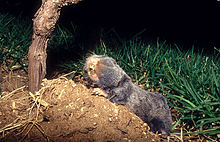
Vibrations can provide cues to conspecifics about specific behaviors being performed, 捕食者の警告や回避、群れや集団の維持、求愛行動. The シリアヒメメクラネズミ Spalax ehrenbergi は、振動性のコミュニケーション(vibrational communication)を使用することが記録された最初の哺乳類である。この地下性の動物は、トンネルの壁に頭をぶつける。This behavior was initially interpreted as part of their tunnel building behavior, but it was eventually realized that they generate temporally patterned vibrational signals for long-distance communication with neighboring mole rats.[62]
Footdrumming is used widely as a predator warning or defensive action. It is used primarily by fossorial or semi-fossorial rodents.[63] The banner-tailed kangaroo rat produces several complex footdrumming patterns in a number of different contexts, one of which is when it encounters a snake. The footdrumming may alert nearby offspring but most likely conveys that the rat is too alert for a successful attack, thus preventing the snake's predatory pursuit.[62][64] Several studies have indicated intentional use of ground vibrations as a means of intra-specific communication during courtship among the Cape mole rat.[65] Footdrumming has been reported to be involved in male-male competition; the dominant male indicates its resource holding potential by drumming, thus minimizing physical contact with potential rivals.[62]
繁殖戦略

Some species of rodent are 一夫一婦制, with an adult male and female forming a lasting pair bond. Monogamy can come in two forms; obligate and facultative. In obligate monogamy, both parents care for the offspring and play an important part in their survival. This occurs in species such as California mice, oldfield mice, Malagasy giant rats and beavers. In these species, males usually mate only with their partners. In addition to increased care for young, obligate monogamy can also be beneficial to the adult male as it decreases the chances of never finding a mate or mating with an infertile female. In facultative monogamy, the males do not provide direct parental care and stay with one female because they cannot access others due to being spatially dispersed. Prairie voles appear to be an example of this form of monogamy, with males guarding and defending females within their vicinity.[66]
一夫多妻制の種では、オスは複数のメスを独占し交尾しようとする。一夫一婦制と同様に、ネズミ目における一夫多妻制 can come in two forms; defense and non-defense. Defense polygynyは、メスを引きつける資源のある縄張りを支配するオスを含む。このことは、キバラマーモット、カリフォルニアジリス、コロンビアジリス、リチャードソンジリスのようなジリス類にみられる。Males with territories are known as "resident" males and the females that live within the territories are known as "resident" females. In the case of marmots, resident males do not appear to ever lose their territories and always win encounters with invading males. Some species are also known to directly defend their resident females and the ensuing fights can lead to severe wounding. In species with non-defense polygyny, males are not territorial and wander widely in search of females to monopolize. These males establish dominance hierarchies, with the high ranking males having access to the most females. このことは、ベルディングジリスやいくつかの樹上性リスにみられる[66]
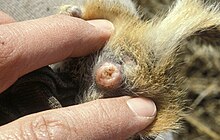
オスとメスの両方が複数の相手と交尾をする乱婚(Promiscuity)もまた、ネズミ目に存在する。シロアシマウス Peromyscus leucopus のメスは、一度の出産で複数の父親の子を産む。Promiscuity leads to increased sperm competition and males tend to have larger testicles. In the Cape ground squirrel, the male's testes can be 20 percent of its head-body length.[66] Several rodent species have flexible mating systems that can vary between monogamy, polygyny and promiscuity.[66]
Female rodents play an active role in choosing their mates. Factors that contribute to female preference may include the size, dominance and spatial ability of the male.[67] In the eusocial naked mole rats, a single female monopolizes mating from at least three males.[42]
In most rodent species, such as brown rats and house mice, ovulation occurs on a regular cycle while in others, such as voles, it is induced by mating. During copulation, males of some rodent species deposit a mating plug in the female's genital opening, both to prevent sperm leakage and to protect against other males inseminating the female. Females can remove the plug and may do so either immediately or after several hours.[67]
Birth and parenting

ネズミ目は、種によって、未熟(閉眼・無毛で、比較的発達が不十分な状態)で生まれるものと、早熟(目が開いて、ほとんど毛も生え、かなり発達した状態)で生まれるものがある。The altricial state is typical for squirrels and mice, while the precocial state usually occurs in species like guinea pigs and porcupines. Females with altricial young typically build elaborate nests before they give birth and maintain them until their offspring are weaned. The female gives birth sitting or lying down and the young emerge in the direction she is facing. The newborns first venture out of the nest a few days after they have opened their eyes and initially keep returning regularly. As they get older and more developed, they visit the nest less often and leave permanently when weaned.[68]
In precocial species, the mothers invest little in nest building and some do not build nests at all. The female gives birth standing and the young emerge behind her. Mothers of these species maintain contact with their highly mobile young with maternal contact calls. Though relatively independent and weaned within days, precocial young may continue to nurse and be groomed by their mothers. Rodent litter sizes also vary and females with smaller litters spend more time in the nest than those with larger litters.[68]

Mother rodents provide both direct parental care, such as nursing, grooming, retrieving and huddling, and indirect parenting, such as food caching, nest building and protection to their offspring.[68] In many social species, young may be cared for by individuals other then their parents, a practice known as alloparenting or cooperative breeding. This is known to occur in black-tailed prairie dogs and Belding's ground squirrels, where mothers have communal nests and nurse unrelated young along with their own. There is some question as to whether these mothers can distinguish which young are theirs. In the Patagonian mara, young are also placed in communal warrens, but mothers do not permit youngsters other than their own to nurse.[69]
Infanticide exists in numerous rodent species and may be practiced by adult conspecifics of either sex. Several reasons have been proposed for this behavior, including nutritional stress, resource competition, avoiding misdirecting parental care and, in the case of males, attempting to make the mother sexually receptive. The latter reason is well supported in primates and lions but less so in rodents.[70] Infanticide appears to be widespread in black-tailed prairie dogs, including infanticide from invading males and immigrant females, as well as occasional cannibalism of an individual's own offspring.[71] To protect against infanticide from other adults, female rodents may employ avoidance or direct aggression against potential perpetrators, multiple mating, territoriality or early termination of pregnancy.[70] Feticide can also occur among rodents; in Alpine marmots, dominant females tend to suppress the reproduction of subordinates by being antagonistic towards them while they are pregnant. The resulting stress causes the fetuses to abort.[72]
Cognition

ネズミ目は、発達した認識力を持つ。彼らはすぐに毒の入った餌を避けることを学び、このことがペストを解決することを困難にしている[1]。Guinea pigs can learn and remember complex pathways to food.[73] Squirrels and kangaroo rats are able to locate caches of food by spatial memory, rather than just by smell.[74][75]
Because 実験用マウス(ハツカネズミ)やラット are widely used as scientific models to further our understanding of biology, a great deal has come to be known about their cognitive capacities. Brown rats exhibit cognitive bias, where information processing is biased by whether they are in a positive or negative affective state.[76] For example, laboratory rats trained to respond to a specific tone by pressing a lever to receive a reward, and to press another lever in response to a different tone so as to avoid receiving an electric shock, are more likely to respond to an intermediate tone by choosing the reward lever if they have just been tickled (something they enjoy), indicating "a link between the directly measured positive affective state and decision making under uncertainty in an animal model."[77]
Laboratory (brown) rats may have the capacity for metacognition—to consider their own learning and then make decisions based on what they know, or do not know, as indicated by choices they make apparently trading off difficulty of tasks and expected rewards, making them the first animals other than primates to have this capacity,[78][79] but these findings are disputed, since the rats may have been following simple operant conditioning principles,[80] or a behavioral economic model.[81]
Brown rats use social learning in a wide range of situations, but perhaps especially so in acquiring food preferences. Learning about suitable foods can be divided into four life stages.[82][83]
- Before birth: In utero, fetal rats detect odor-bearing particles that come from their mother's diet and cross the placental barrier. Shortly after birth, newborn rats respond positively to these foods.[82][83]
- During nursing: Nursing rats receive information about their mother's diet through her milk. They prefer the foods she ate during lactation.[82][83]
- Weaning: When young rats are weaning and eating solid foods for the first time, they use adult rats as guides. They forage where the adults are foraging or where adults have previously scent-marked.[82][83]
- Adolescence and adulthood: When rats forage on their own, their food choices are influenced by social interactions that may take place far away from foraging sites. They smell foods on the fur, whiskers and especially the breath of other rats and strongly prefer the foods those rats had previously eaten.[82] This inclines them not to eat poisons avoided by older rats.[83]
Classification and evolution
Evolutionary history

Dentition is the key feature by which fossil rodents are recognized and the earliest record of such mammals comes from the Paleocene, shortly after the extinction of the non-avian dinosaurs some 66 million years ago. These fossils are found in Laurasia,[84] the supercontinent composed of modern-day North America, Europe, and Asia. The divergence of Glires, a clade consisting of rodents and lagomorphs (rabbits, hares and pikas), from other placental mammals occurred within a few million years after the Cretaceous-Tertiary boundary; rodents and lagomorphs then radiated during the Cenozoic.[85] Some molecular clock data suggest modern rodents (members of the order Rodentia) had appeared by the late Cretaceous, although other molecular divergence estimations are in agreement with the fossil record.[86][87]
Rodents are thought to have evolved in Asia, where local multituberculate faunas were severely affected by the Cretaceous–Paleogene extinction event and never fully recovered, unlike their North American and European relatives. In the resulting ecological vacuum, rodents and other Glires were allowed to evolve and diversify, taking the niches left by extinct multituberculates. The correlation between the spread of rodents and the demise of multituberculates is a controversial topic, not fully resolved. American and European multituberculate assemblages do decline in diversity in correlation with the introduction of rodents in these areas, but the remaining Asian multituberculates co-existed with rodents with no observable replacement taking place, and ultimately both clades co-existed for at least 15 million years.[88]
The history of the colonization of the world's continents by rodents is complex. The movements of the large superfamily Muroidea (including hamsters, gerbils, true mice and rats) may have involved up to seven colonizations of Africa, five of North America, four of Southeast Asia, two of South America and up to ten of Eurasia.[89]

During the Eocene, rodents began to diversify. Beavers appeared in North America in the late Eocene before spreading to Eurasia.[91] Late in the Eocene, hystricognaths invaded Africa, most probably having originated in Asia at least 39.5 million years ago.[92] From Africa, fossil evidence shows that some hystricognaths (caviomorphs) colonized South America, which was an isolated continent at the time, evidently making use of ocean currents to cross the Atlantic on floating debris.[93] Caviomorphs had arrived in South America by 41 million years ago (implying a date at least as early as this for hystricognaths in Africa),[92] and had reached the Greater Antilles by the early Oligocene, suggesting that they must have dispersed rapidly across South America.[94]
Nesomyid rodents are thought to have rafted from Africa to Madagascar 20–24 million years ago.[95] All 27 species of native Malagasy rodents appear to be descendents of a single colonization event.
By 20 million years ago, fossils recognizably belonging to the current families such as Muridae had emerged.[84] By the Miocene, when Africa had collided with Asia, African rodents such as the porcupine began to spread into Eurasia.[96] Some fossil species were very large in comparison to modern rodents and included the giant beaver, Castoroides ohioensis, which grew to a length of 2.5 m (8 ft 2 in) and weight of 100 kg (220 lb).[97] The largest known rodent was Josephoartigasia monesi, a pacarana with an estimated body length of 3 m (10 ft).[98]
The first rodents arrived in Australia via Indonesia around 5 million years ago. Although marsupials are the most prominent mammals in Australia, many rodents, all belonging to the subfamily Murinae, are among the continent's mammal species.[99] There are about fifty species of 'old endemics', the first wave of rodents to colonize the country in the Miocene and early Pliocene, and eight true rat (Rattus) species of 'new endemics', arriving in a subsequent wave in the late Pliocene or early Pleistocene. The earliest fossil rodents in Australia have a maximum age of 4.5 million years,[100] and molecular data is consistent with the colonization of New Guinea from the west during the late Miocene or early Pliocene followed by rapid diversification. A further wave of adaptive radiation occurred after one or more colonizations of Australia some 2 to 3 million years later.[101]
Rodents participated in the Great American Interchange that resulted from the joining of the Americas by formation of the Isthmus of Panama, around 3 million years ago in the Piacenzian age.[102] In this exchange, a small number of species such as the New World porcupines (Erethizontidae) headed north.[84] However, the main southward invasion of sigmodontines preceded formation of the land bridge by at least several million years, probably occurring via rafting.[103][104][105] Sigmodontines diversified explosively once in South America, although some degree of diversification may have already occurred in Central America before the colonization.[104][105] Their "head start" has relegated other North American rodent groups (sciurids, geomyids, heteromyids and nonsigmodontine cricetids) to a minor presence in the contemporary South American fauna.
Standard classification
The use of the order name "Rodentia" is attributed to the English traveler and naturalist Thomas Edward Bowdich (1821).[106] The Modern Latin word "Rodentia" is derived from "rodens", present participle of "rodere" – "to gnaw", "eat away".[107] The hares, rabbits and pikas (order Lagomorpha) have continuously growing incisors, as do rodents, and were at one time included in the order. However, they have an additional pair of incisors in the upper jaw and the two orders have quite separate evolutionary histories.[108] The phylogeny of the rodents places them in the clades Glires, Euarchontoglires and Boreoeutheria. The cladogram below shows the inner and outer relations of Rodentia based on a 2012 attempt by Wu et al. to align the molecular clock with paleontological data:[109]
| Boreoeutheria |
| ||||||||||||||||||||||||||||||||||||||||||||||||||||||||||||||||||||||||||||||||||||||||||||||||||||||||||||||||||||||||||||||
The order Rodentia may be divided into suborders, infraorders, superfamilies and families. There is a great deal of parallelism and convergence among rodents caused by the fact that they have tended to evolve to fill largely similar niches. This parallel evolution includes not only the structure of the teeth, but also the infraorbital region of the skull (below the eye socket) and makes classification difficult as similar traits may not be due to common ancestry.[110][111] Brandt (1855) was the first to propose dividing Rodentia into three suborders, Sciuromorpha, Hystricomorpha and Myomorpha, based on the development of certain muscles in the jaw and this system was widely accepted. Schlosser (1884) performed a comprehensive review of rodent fossils, mainly using the cheek teeth, and found that they fitted into the classical system, but Tullborg (1899) proposed just two sub-orders, Sciurognathi and Hystricognathi. These were based on the degree of inflection of the lower jaw and were to be further subdivided into Sciuromorpha, Myomorpha, Hystricomorpha and Bathyergomorpha. Matthew (1910) created a phylogenetic tree of New World rodents but did not include the more problematic Old World species. Further attempts at classification continued without agreement, with some authors adopting the classical three suborder system and others Tullborg's two suborders.[110]
These disagreements remain unresolved, nor have molecular studies fully resolved the situation though they have confirmed the monophyly of the group and that the clade has descended from a common Paleocene ancestor. Carleton and Musser (2005) in Mammal Species of the World have provisionally adopted a five suborder system: Sciuromorpha, Castorimorpha, Myomorpha, Anomaluromorpha, and Hystricomorpha. These include 33 families, 481 genera and 2277 species:[112][113]
Order Rodentia (from Latin, rodere, to gnaw)





- Suborder Anomaluromorpha
- Family Anomaluridae: scaly-tailed squirrels
- Family Pedetidae: springhares
- Suborder Castorimorpha
- Superfamily Castoroidea
- Family Castoridae: beavers
- Superfamily Geomyoidea
- Family Geomyidae: pocket gophers (true gophers)
- Family Heteromyidae: kangaroo rats, kangaroo mice
- Superfamily Castoroidea
- Suborder Hystricomorpha
- Family incertae sedis Diatomyidae: Laotian rock rat
- Infraorder Ctenodactylomorphi
- Family Ctenodactylidae: gundis
- Infraorder Hystricognathi
- Family Bathyergidae: African mole rats
- Family Hystricidae: Old World porcupines
- Family Petromuridae: dassie rat
- Family Thryonomyidae: cane rats
- Parvorder Caviomorpha
- Family †Heptaxodontidae: giant hutias
- Family Abrocomidae: chinchilla rats
- Family Capromyidae: hutias
- Family Caviidae: cavies, including Guinea pigs and the capybara
- Family Chinchillidae: chinchillas, viscachas
- Family Ctenomyidae: tuco-tucos
- Family Dasyproctidae: agoutis
- Family Cuniculidae: pacas
- Family Dinomyidae: pacaranas
- Family Echimyidae: spiny rats
- Family Erethizontidae: New World porcupines
- Family Myocastoridae: nutria, coypu
- Family Octodontidae: octodonts
- Suborder Myomorpha
- Superfamily Dipodoidea
- Family Dipodidae: jerboas and jumping mice
- Superfamily Muroidea
- Family Calomyscidae: mouse-like hamsters
- Family Cricetidae: hamsters, New World rats and mice, muskrats, voles, lemmings
- Family Muridae: true mice and rats, gerbils, spiny mice, crested rat
- Family Nesomyidae: climbing mice, rock mice, white-tailed rat, Malagasy rats and mice
- Family Platacanthomyidae: spiny dormice
- Family Spalacidae: mole rats, bamboo rats, zokors
- Superfamily Dipodoidea
- Suborder Sciuromorpha
- Family Aplodontiidae: mountain beaver
- Family Gliridae (also Myoxidae, Muscardinidae): dormice
- Family Sciuridae: squirrels, including chipmunks, prairie dogs, marmots
Interaction with humans
Conservation

While rodents are not the most seriously threatened order of mammals, there are 168 species in 126 genera that are said to warrant conservation attention[114] in the face of limited appreciation by the public. Since 76 percent of rodent genera contain only one species, much phylogenetic diversity could be lost with a comparatively small number of extinctions. In the absence of more detailed knowledge of species at risk and accurate taxonomy, conservation must be based mainly on higher taxa (such as families rather than species) and geographical hot spots.[114] Several species of rice rat have become extinct since the 19th century, probably through habitat loss and the introduction of alien species.[115] In Colombia, the brown hairy dwarf porcupine was recorded from only two mountain localities in the 1920s, while the red crested soft-furred spiny rat is known only from its type locality on the Caribbean coast, so these species are considered vulnerable.[116] The IUCN Species Survival Commission writes "We can safely conclude that many South American rodents are seriously threatened, mainly by environmental disturbance and intensive hunting".[117]
The "three now cosmopolitan commensal rodent pest species"[118] (the brown rat, the black rat and the house mouse) have been dispersed in association with humans, partly on sailing ships in the Age of Exploration, and with a fourth species in the Pacific, the Polynesian rat (Rattus exulans), have severely damaged island biotas around the world. For example, when the black rat reached Lord Howe Island in 1918, over 40 percent of the terrestrial bird species of the island, including the Lord Howe fantail,[119] became extinct within ten years. Similar destruction has been seen on Midway Island (1943) and Big South Cape Island (1962). Conservation projects can with careful planning completely eradicate these pest rodents from islands using an anticoagulant rodenticide such as brodifacoum.[118] This approach has been successful on the island of Lundy in the United Kingdom, where the eradication of an estimated 40,000 brown rats is giving populations of Manx shearwater and Atlantic puffin a chance to recover from near-extinction.[120][121]
Exploitation

Humanity has long used animal skins for clothing, as the leather is durable and the fur provides extra insulation.[2] The native people of North America made much use of beaver pelts, tanning and sewing them together to make robes. Europeans appreciated the quality of these and the North American fur trade developed and became of prime importance to early settlers. In Europe, the soft underfur known as "beaver wool" was found to be ideal for felting and was made into beaver hats and trimming for clothing.[122][123] Later, the coypu took over as a cheaper source of fur for felting and was farmed extensively in America and Europe; however, fashions changed, new materials became available and this area of the animal fur industry declined.[124] The chinchilla has a soft and silky coat and the demand for its fur was so high that it was nearly wiped out in the wild before farming took over as the main source of pelts.[124] The quills and guardhairs of porcupines are used for traditional decorative clothing. For example, their guardhairs are used in the creation of the Native American "porky roach" headdress. The main quills may be dyed, and then applied in combination with thread to embellish leather accessories such as knife sheaths and leather bags. Lakota women would harvest the quills for quillwork by throwing a blanket over a porcupine and retrieving the quills it left stuck in the blanket.[125]
At least 89 species of rodent, mostly Hystricomorpha such as guinea pigs, agoutis and capybaras, are eaten by humans; in 1985, there were at least 42 different societies in which people eat rats.[126] Guinea pigs were first raised for food around 2500 B.C. and by 1500 B.C. had become the main source of meat for the Inca Empire. Dormice were raised by the Romans in special pots called "gliraria", or in large outdoor enclosures, where they were fattened on walnuts, chestnuts, and acorns. The dormice were also caught from the wild in autumn when they were fattest, and either roasted and dipped into honey or baked while stuffed with a mixture of pork, pine nuts, and other flavorings. Researchers found that in Amazonia, where large mammals were scarce, pacas and common agoutis accounted for around 40 percent of the annual game taken by the indigenous people, but in forested areas where larger mammals were abundant, these rodents comprised only about 3 percent of the take.[126]
Guinea pigs are used in the cuisine of Cuzco, Peru, in dishes such as cuy al horno, baked guinea pig.[2][127] The traditional Andean stove, known as a qoncha or a fogón, is made from mud and clay reinforced with straw and hair from animals such as guinea pigs.[128] In Peru, there are at any time 20 million domestic guinea pigs, which annually produce 64 million edible carcasses. This animal is an excellent food source since the flesh is 19% protein.[126] In the United States, mostly squirrels, but also muskrats, porcupines, and ground hogs are eaten by humans. The Navajo people ate prairie dog baked in mud, while the Paiute ate gophers, squirrels, and rats.[126]
Rodents including guinea pigs,[129] mice, rats, hamsters, gerbils, chinchillas, degus and chipmunks make convenient pets able to live in small spaces, each species with its own qualities.[130] Most are normally kept in cages of suitable sizes and have varied requirements for space and social interaction. If handled from a young age, they are usually docile and do not bite. Guinea pigs have a long lifespan and need a large cage.[73] Rats also need plenty of space and can become very tame, can learn tricks and seem to enjoy human companionship. Mice are short-lived but take up very little space. Hamsters are solitary but tend to be nocturnal. They have interesting behaviors, but unless handled regularly they may be defensive. Gerbils are not usually aggressive, rarely bite and are sociable animals that enjoy the company of humans and their own kind.[131]

Rodents are used widely as model organisms in animal testing.[2][132] Albino mutant rats were first used for research in 1828 and later became the first animal domesticated for purely scientific purposes.[133] Nowadays, the house mouse is the most commonly used laboratory rodent, and in 1979 it was estimated that fifty million were used annually worldwide. They are favored because of their small size, fertility, short gestation period and ease of handling and because they are susceptible to many of the conditions and infections that afflict humans. They are used in research into genetics, developmental biology, cell biology, oncology and immunology.[134] Guinea pigs were popular laboratory animals until the late 20th century; about 2.5 million guinea pigs were used annually in the United States for research in the 1960s,[135] but that total decreased to about 375,000 by the mid-1990s.[136] In 2007, they constituted about 2% of all laboratory animals.[135] Guinea pigs played a major role in the establishment of germ theory in the late 19th century, through the experiments of Louis Pasteur, Émile Roux, and Robert Koch.[137] They have been launched into orbital space flight several times—first by the USSR on the Sputnik 9 biosatellite of March 9, 1961, with a successful recovery.[138] The naked mole rat is the only known mammal that is poikilothermic; it is used in studies on thermoregulation. It is also unusual in not producing the neurotransmitter substance P, a fact which researchers find useful in studies on pain.[139]
Rodents have sensitive olfactory abilities, which have been used by humans to detect odors or chemicals of interest.[140] The Gambian pouched rat is able to detect tuberculosis bacilli with a sensitivity of up to 86.6%, and specificity (detecting the absence of the bacilli) of over 93%; the same species has been trained to detect land mines.[141][142] Rats have been studied for possible use in hazardous situations such as in disaster zones. They can be trained to respond to commands, which may be given remotely, and even persuaded to venture into brightly lit areas, which rats usually avoid.[143][144][145]
As pests and disease vectors

Some rodent species are serious agricultural pests, eating large quantities of food stored by humans.[146] For example, in 2003, the amount of rice lost to mice and rats in Asia was estimated to be enough to feed 200 million people. Most of the damage worldwide is caused by a relatively small number of species, chiefly rats and mice.[147] In Indonesia and Tanzania, rodents reduce crop yields by around fifteen percent, while in some instances in South America losses have reached ninety percent. Across Africa, rodents including Mastomys and Arvicanthis damage cereals, groundnuts, vegetables and cacao. In Asia, rats, mice and species such as Microtus brandti, Meriones unguiculatus and Eospalax baileyi damage crops of rice, sorghum, tubers, vegetables and nuts. In Europe, as well as rats and mice, species of Apodemus, Microtus and in occasional outbreaks Arvicola terrestris cause damage to orchards, vegetables and pasture as well as cereals. In South America, a wider range of rodent species, such as Holochilus, Akodon, Calomys, Oligoryzomys, Phyllotis, Sigmodon and Zygodontomys, damage many crops including sugar cane, fruits, vegetables, and tubers.[147]
Rodents are also significant vectors of disease.[148] The black rat, with the fleas that it carries, plays a primary role in spreading the bacterium Yersinia pestis responsible for bubonic plague,[149] and carries the organisms responsible for typhus, Weil's disease, toxoplasmosis and trichinosis.[150] A number of rodents carry hantaviruses, including the Puumala, Dobrava and Saaremaa viruses, which can infect humans.[151] Rodents also help to transmit diseases including babesiosis, cutaneous leishmaniasis, human granulocytic anaplasmosis, Lyme disease, Omsk hemorrhagic fever, Powassan virus, rickettsialpox, relapsing fever, Rocky Mountain spotted fever, and West Nile virus.[152]
Because rodents are a nuisance and endanger public health, human societies often attempt to control them. Traditionally, this involved poisoning and trapping, methods that were not always safe or effective. More recently, integrated pest management attempts to improve control with a combination of surveys to determine the size and distribution of the pest population, the establishment of tolerance limits (levels of pest activity at which to intervene), interventions, and evaluation of effectiveness based on repeated surveys. Interventions may include education, making and applying laws and regulations, modifying the habitat, changing farming practices, and biological control using pathogens or predators, as well as poisoning and trapping.[153] The use of pathogens such as Salmonella has the drawback that they can infect man and domestic animals, and rodents often become resistant. The use of predators including ferrets, mongooses and monitor lizards has been found unsatisfactory. Domestic and feral cats are able to control rodents effectively, provided the rodent population is not too large.[154] In the UK, two species in particular, the house mouse and the brown rat, are actively controlled to limit damage in growing crops, loss and contamination of stored crops and structural damage to facilities, as well as to comply with the law.[155]
See also
- Mouse models of breast cancer metastasis
References
Further reading
- Carleton, M. D.; Musser, G. G. "Order Rodentia", pages 745–752 in Wilson & Reeder (2005).
- McKenna, Malcolm C.; Bell, Susan K. (1997). Classification of Mammals Above the Species Level. Columbia University Press. ISBN 0-231-11013-8
- Wilson, D. E.; Reeder, D. M., ed (2005). Mammal Species of the World: A Taxonomic and Geographic Reference. Johns Hopkins University Press. ISBN 978-0-8018-8221-0
External links
- Zoology, osteology, comparative anatomy
- Various
- African rodentia
- Rodent photos
- Rodent Species Fact Sheets from the National Pest Management Association on Deer Mice, Norway Rats, and other rodent species

